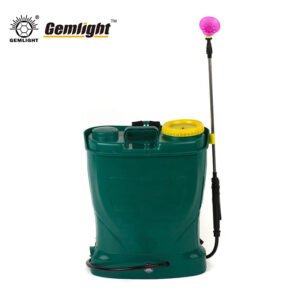When it comes to reliable cutting tools, few are as iconic and practical as the wooden handle machete. Used across farming fields, sugarcane plantations, forests, and even home gardens, the machete has earned its place as a trusted companion for laborers, farmers, and outdoor enthusiasts. Among the many machete variations available, the wooden handle machete remains one of the most popular due to its comfort, balance, and traditional craftsmanship.
In this article, you will discover everything you need to know about wooden handle machetes—from their history and design to their practical uses, benefits, and buying considerations. Whether you are a large distributor, agricultural supplier, or outdoor equipment retailer, understanding why the wooden handle machete continues to dominate the market will help you make smarter business decisions and meet the needs of your customers.
The Origins of Wooden Handle Machetes
The machete is not just a tool—it is a cultural icon across Africa, South America, and Asia. For centuries, people have relied on machetes for agriculture, land clearing, construction, and even self-protection. Traditionally, machetes were hand-forged with carbon steel blades and fitted with wooden handles, as wood was both abundant and easy to work with.
Wooden handles have stood the test of time for a reason: they provide durability, shock absorption, and a natural grip that synthetic materials cannot fully replicate. Even today, despite the rise of plastic and composite handles, wooden handle machetes are still in strong demand, especially in developing agricultural markets where practicality and comfort matter most.
Why Wooden Handle Machetes Are Still Popular
A modern buyer might ask: with so many new handle materials like polypropylene, fiberglass, and rubber, why are wooden handle machetes still widely used? The answer lies in four main reasons:
-
Natural Comfort and Grip
Wood feels warm and natural in the hand. Unlike plastic handles that can feel slippery in wet conditions, wooden handles provide a solid grip for sweaty, muddy, or gloved hands. -
Shock Absorption
During continuous swinging, a machete blade creates vibration. Wooden handles absorb much of this shock, reducing fatigue during long working hours. -
Traditional Trust
Farmers and field workers have used wooden handle machetes for generations. Trust in the traditional design makes it easier for suppliers to sell and for users to adopt without hesitation. -
Easy Repair and Replacement
If a wooden handle breaks, it can be replaced or repaired locally using carpentry tools. In rural areas where replacement parts are scarce, this practicality adds real value.
Applications of Wooden Handle Machetes
The versatility of the wooden handle machete makes it suitable for multiple industries and user groups. Here are the most common applications:
1. Agriculture and Farming
-
Cutting sugarcane, maize, or cassava stalks
-
Clearing weeds and undergrowth
-
Harvesting bananas and coconuts
2. Gardening and Landscaping
-
Trimming shrubs and small branches
-
Shaping hedges and bushes
-
Cutting compost materials
3. Forestry and Bush Clearing
-
Clearing paths in forests
-
Managing underbrush in plantations
-
Preparing land for new planting
4. Outdoor Survival and Camping
-
Cutting firewood
-
Building shelters
-
Food preparation and butchering
5. Construction and Utility
-
Cutting bamboo or reeds for fencing
-
Clearing land for small-scale projects
Because of these broad applications, wooden handle machetes appeal to distributors in Africa, South America, and Southeast Asia where both rural farmers and urban gardeners are steady buyers.
Key Features of a High-Quality Wooden Handle Machete
When evaluating a wooden handle machete for bulk purchase, focus on these critical features:
-
Blade Material
The best machetes use high-carbon steel, which combines sharpness, hardness, and flexibility. Heat treatment processes like quenching and tempering ensure durability. -
Blade Shape
Different machete types suit different uses:-
Latin machete: Straight blade, versatile for general farming
-
Panga machete: Wider tip, ideal for chopping thick vegetation
-
Bolo machete: Curved belly, excellent for harvesting crops
-
-
Handle Design
-
Ergonomic grip for comfort
-
Proper fitting between blade tang and wooden handle
-
Smoothly polished wood to prevent blisters
-
-
Assembly Quality
Rivets or screws should firmly attach the handle to the tang. A loose handle reduces safety and efficiency. -
Finishing
Polished blades, sharp edges, and protective coatings increase both durability and appearance.
Benefits of Choosing Wooden Handle Machetes for Business
For wholesalers, distributors, and brand companies, stocking wooden handle machetes brings several advantages:
-
High Market Demand
Wooden handle machetes are in constant demand across Africa and Latin America, particularly in agricultural communities. -
Competitive Pricing
Compared to plastic or composite handles, wooden handles are cost-effective while maintaining high durability. -
Customization Options
Handles can be crafted in different wood types, shapes, and colors, allowing companies to customize products under OEM or ODM branding. -
Eco-Friendly Appeal
With rising environmental awareness, wood is considered more sustainable than plastic. This can be an added selling point for certain buyers.
Wooden Handle Machete vs. Plastic Handle Machete
Many buyers wonder which is better: wooden handle machetes or plastic handle machetes. Here’s a quick comparison:
| Feature | Wooden Handle Machete | Plastic Handle Machete |
|---|---|---|
| Grip Comfort | Natural, firm, less slippery | Can be slippery when wet |
| Shock Absorption | Excellent | Lower, more vibration |
| Durability | Strong, but may crack if not maintained | Resistant to cracking, long-lasting |
| Maintenance | Needs oiling to prevent drying/cracking | Low maintenance |
| Replacement | Easy to repair/replace locally | Difficult without factory replacement |
| Price | Affordable and cost-effective | Slightly more expensive |
For heavy-duty farming, many workers still prefer wooden handle machetes, while urban gardeners may lean toward plastic. As a distributor, stocking both can help target multiple customer segments.
How to Maintain a Wooden Handle Machete
Proper care extends the life of a machete, ensuring customer satisfaction and repeat orders. Here are maintenance tips:
-
Clean After Use
Wipe the blade with a dry cloth after cutting vegetation to prevent rust. -
Oil the Blade
Apply a thin layer of machine oil or vegetable oil to the blade to protect it from moisture. -
Handle Care
Occasionally apply linseed oil to the wooden handle to prevent drying and cracking. -
Sharpen Regularly
Keep the edge sharp using a whetstone or file. A sharp blade works faster and safer. -
Safe Storage
Store in a dry place. A machete sheath can also extend handle and blade life.
Buying Guide for Bulk Wooden Handle Machetes
If you are sourcing wooden handle machetes for wholesale or distribution, keep the following in mind:
-
Choose the Right Manufacturer
Work with factories that specialize in agricultural tools and have proven quality control. -
Check Certifications
Look for ISO, SGS, or other international quality certifications that assure compliance with global standards. -
Request Samples
Always test a few samples for blade hardness, handle fitting, and edge sharpness before placing bulk orders. -
Consider Packaging
Bulk orders are usually packed in cartons of 12 or 24 pieces. Packaging should be sturdy to withstand long-distance shipping. -
Negotiate OEM/ODM Services
Many suppliers offer branding customization—such as logo stamping on blades or branded packaging—helping distributors sell under their own name.
Why Gemlight Wooden Handle Machetes Stand Out
As a leading factory in China, Gemlight specializes in producing high-quality wooden handle machetes for global markets. Here’s why our machetes are trusted by distributors across Africa and South America:
-
High-carbon steel blades with perfect hardness and flexibility
-
Well-polished and sharpened edges for immediate use
-
Durable wooden handles, firmly riveted for long service life
-
OEM & ODM branding services to help customers build their own brand identity
-
Efficient production lines ensuring competitive prices and timely delivery
With Gemlight, you get not just a product, but a reliable partnership that helps you grow your distribution business.
Conclusion
The wooden handle machete continues to be a timeless tool—respected for its durability, comfort, and versatility. From sugarcane farms in Africa to banana plantations in South America, its reputation remains unmatched. For distributors, wholesalers, and tool brand companies, investing in wooden handle machetes means tapping into a product with consistent demand, strong cultural roots, and proven effectiveness.
By choosing the right supplier and offering both quality and affordability, you can meet your market’s needs and build lasting business success.




